BY JUHA TIURANIEMI, JOHANNA AHO, AND MIKKO ÖSTRING
During the last decade, 39 new shopping centers opened in Finland, increasing the total number of shopping centers to 92 at the end of the year 2014. Shopping center GLA has increased by more than 900,000 sq m during the last decade and now totals 1.9 million sq m. The market is growing, despite suffering the consequences of the global economic crisis over the past few years. The effects on shopping centers have not been dramatic. Therefore five new “big” centers with more than 30,000 sq m opened between 2012 and 2014, namely Veturi, Willa, Matkus, Kaari, and Puuvilla. During the same period, many of the malls launched during the 1980s were refurbished, such as Itis, Kluuvi Forum Koskikeskus.
For the next five years until 2020, about 10 new centers are planned, which will add 400,000 sq m of GLA. The biggest new projects (each with more than 50,000 sq m of GLA) in the Helsinki Metropolitan Area are Kivistö, Tripla, and Redi. There are also shopping center projects planned for other Finnish cities like Tampere, Jyväskylä, Lappeenranta, Oulu, and Pieksämäki. Progress from plans to openings naturally depends on the development of investment and consumer markets. Urbanization is ongoing in Finland and consumer needs are transforming.
Refurbishments and adaptations of existing shopping centers and retail parks are needed as well. Major ongoing extension projects like Iso-Omena and Ainoa in the Helsinki Metropolitan Area are located along the western metro line, which is under construction at the moment and will be completed in two phases in 2016 and 2020. Other major ongoing extensions include Mylly in the Turku region and Iso-Kristiina, where Lappeenranta’s city theater will be located inside the mall. Commercial and public services seem to be a more and more natural part of shopping centers’ business mix within traditional retail businesses.
SUSTAINABILITY ALREADY AN ESSENTIAL ELEMENT
Finland is recognized as a world-class pioneer in shopping center sustainability. The Trio shopping center received the first construction-phase LEED certificate in Northern Europe in 2009. Sello is the first mall in Europe to receive the LEED Gold certificate for an existing building in 2010. And Veturi is the first shopping center in Finland to receive a BREEAM “very good” assessment in 2012. Today, LEED and BREEAM criteria are industry standards in all major shopping center projects.
The majority of Finnish shopping centers are part of a community structure in which convenient accessibility, housing, and services support each other. The public space in malls is also frequently used in increasingly diverse ways for promotions and events. Shopping centers play an important role as the beating hearts of com-munities and as a living room and meeting place for people.

RETAIL SALES AND FOOTFALL HAVE DEVELOPED WELL
A look at the cold numbers: During the years from 2008 to 2013, shopping centers’ sales and footfall grew each year by around 4-6%. Shopping centers’ sales increased in 2013 to a total of €5.8 billion (+5.0 %) and visitor numbers grew to 356 million a year (+6.4 %). Comparable sales (excluding new shopping centers and major renovations) decreased slightly (-0.5 %). The market share of shopping centers increased to 15% in 2013 (from 14.3 % in 2012). Shopping centers performed well, although the Finnish retail market saw a challenging year 2013 without annual growth. (Source: Finnish Council of Shopping Centers, FCSC)
Shopping centers are significant investments with long-term impacts. Total investments of over €1 billion have been made into building new shopping centers or refurbishing existing ones in Finland over the last five years. International investors have been active in Finland during the last decade. Cross-border investments into the country tripled during 2003-2008. The global financial crisis made investment markets more national after 2009 and this was not different in Finland. At the moment, the ownership structure of Finnish shopping centers is showing a variety of players. Market shares based on GLA are as follows: 29% Finnish real estate investment companies, 15% pension funds, 14% foreign real estate investment companies, 14% retailers, 8% Finnish real estate funds, 6% private persons, 5% foreign real estate funds, and 9% others (source: FCSC).
The tightening economic environment has put increasing pressure on Finnish public finances in recent years. Furthermore, mainly due to the rapidly aging population, structural reforms are needed to control public spending and support fiscal sustainability. Compared to most other European countries, Finnish public finances are relatively strong and well-balanced. Despite the challenging economic environment, Finland is one of the few euro countries that still maintains its “AAA” rating. The Scandinavian country provides a good environment for investments.

THE FINNISH COUNCIL OF SHOPPING CENTERS: A VOICE FOR THE ENTIRE SECTOR
Who represents the industry towards outsiders? The Finnish Council of Shopping Centers (FCSC) was founded in 1984. It is the voice of the whole sector in Finland, and a non-profit trade association for the shopping center industry. It brings together shopping center owners, property developers, managers, retailers, architects, and construction professionals. The FCSC’s main objective is to provide a forum for discussion and exchange of knowledge about the retail property industry.
One of its aims is to represent the views of members to influence decision making processes. The FCSC also publishes an annual industry review, which provides information on shopping centers and contains key figures and statistics about the in-dustry, as well as basic information and key figures for all the main shopping centers. The goal is to increase transparency and knowledge of the sector among investors, customers, traders, and main stakeholders in the sector, both in Finland and abroad. The council works in close connection with other national associations as well as international ones, such as the Nordic Council of Shopping Centers (NCSC) and the International Council of Shopping Centers (ICSC).
In Finland, legal decision making is bound by written law, making it very important to participate in the legislative process and to represent the views of members. Legislation establishes basic principles for sustainable building. There are special requirements for planning large retail venues. Regional plans and local master plans are subject to special content requirements which demand that land use must not have harmful effects on the commercial services in town centers. Services in the area must be within reach by public transport, bicycle, and pedestrian traffic, and, where possible, land use should promote the creation of a service network with reasonable distances between services.
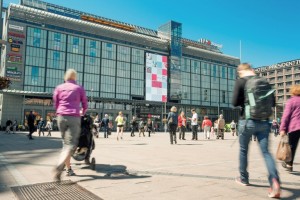
SHOPPING CENTERS AT THE HEART OF THE COMMUNITY
Let’s have a look on the market players. Citycon is a leading owner, manager, and developer of urban grocery-anchored shopping centers in the Nordic and Baltic regions. The company’s shopping centers are located in urban environments close to where customers live and work and within close reach of public transport, health care, and municipal facilities. Its multi-functional schemes have strong ties to the surrounding community and offer the tenants a natural, sustainable customer flow driven by urban locations. Citycon wants to build local communities by being a good, active neighbor.
One example of the company’s community engagement work is a project that started in 2013. The objective of the campaign is to increase tenants’ and service providers’ understanding of young people and youth in general, and to create harmonized, locally adapted procedures for each shopping center’s security guards. The next step is to involve youths in the planning phase of the Iso Omena shopping center’s redevelopment and expansion project in the Helsinki metropolitan area. Citcycon therefore gathered together the shopping center and project management, architects, and a group of young people living in the area in a joint workshop. The young people had a chance to give their input and express their wishes and ideas concerning the Iso Omena project.
THE CURTAIN OPENS ON OUTSTANDING PROJECTS
Kamppi Center in Helsinki is involved in community-building, too. It offers great opportunities for interactive communication between customers and different interest groups. They can be charitable organizations, companies, students, musicians, clubs, or any private person willing to perform something. Kamppi Center – which counts 35 million visitors per year – has received numerous requests to offer such a stage for flash mobs. This type of content is excellent for shopping centers. It is often free, creates positive buzz in social media, and increases the commitment of customers to the center by giving them a feeling of “my personal center where I also performed.” The mall benefits from this content made by customers by having the opportunity to offer much more entertainment for customers than they would by producing everything by themselves.
At its best, this authentic content is completed by commercial promotions, centers’ own events, and even digital entertainment. The digital screens have become a significant source of income and at Kamppi Center. Shopping centers are in a good position to take advantage of the changing media market and offer advertising channels near the stores.
Kesko also wants to create a new form of shopping center business with the i3 project – a unique setting for shopping, entertainment, eating, and meeting in Helsinki. The opening is planned for 2017. The company owns or manages more than 4 million sq m of retail space, of which a significant proportion is leasable to operators outside the Group. The value of property it owns exceeds €1.4 billion. A further scheme in the Finish capital is Citycenter, a newly renovated shopping center in the heart of downtown Helsinki. Located at a crossroads of customer and traffic flows, the shopping center offers a wide array of fashion, beauty, wellness, and leisure services.
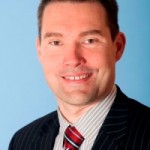



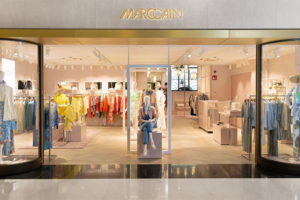
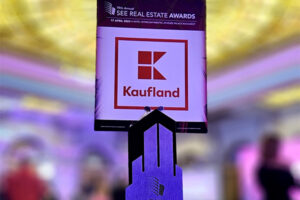
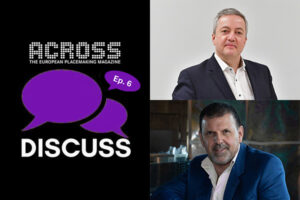

![Titel_Across_1_24_Endversion[111270] Titel_Across_1_24_Endversion[111270]](https://www.across-magazine.com/wp-content/uploads/elementor/thumbs/Titel_Across_1_24_Endversion111270-qjpg2yp7x6msxzo90wpo62uop32tmjtjils84ezryg.jpg)
